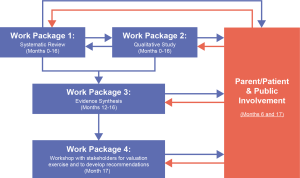Valentia
Why are we doing this study?
During pregnancy and the newborn period, women in the UK are offered a number of tests which tell them how likely it is that their babies have a number of genetic or physical conditions. These tests are called 'screening', and include the 12 week dating scan, 20 week anomaly scan, and the newborn blood spot ('heel prick') tests which look for conditions such as cystic fibrosis and sickle cell disease.
Providing thousands of screening tests and care for women and babies is very expensive to the NHS so it is important that the screening programmes represent good value for money. The process of comparing the costs and benefits of a screening programme is called a health economic assessment. It is one of the tools that the UK National Screening Committee (UKNSC, the body that makes recommendations to government on population screening) uses to decide whether to recommend a screening programme. There is some concern about how accurately health economic assessments have incorporated and valued benefits and harms of current or new antenatal/newborn screening programmes. For example, it is challenging to value the benefits and harms of programmes that can lead decisions to terminate a pregnancy.
Our study will aim to investigate approaches to health economic assessment that have been used and provide recommendations about whether they are appropriate or if a new framework for economic assessment is needed.
What does this study involve?
This study has a Patient and Public Involvement (PPI) component and four work packages with the following aims:
- PPI: Ensure views/experiences of PPI members are captured and contribute to shared decision-making to shape different stages of the study.
- Work Package 1: Review and critique the literature on how benefits and harms of antenatal and newborn screening have been identified, measured and valued by economic assessments.
- Work Package 2: Identify how all the people involved in screening, including parents and physicians, view the harms and benefits of the current and proposed antenatal and newborn screening programmes for families and wider society.
- Work Package 3: Evidence synthesis (a process which combines information from multiple studies that have investigated the same thing to reach an overall understanding of what was found) of the relative merits of alternative economic methods that have been used to assess benefits and harms of antenatal and newborn screening programmes.
- Work Package 4: Workshop with stakeholders for valuation exercise and to develop recommendations.
The timeline of each component and relationship between each component are shown below:


